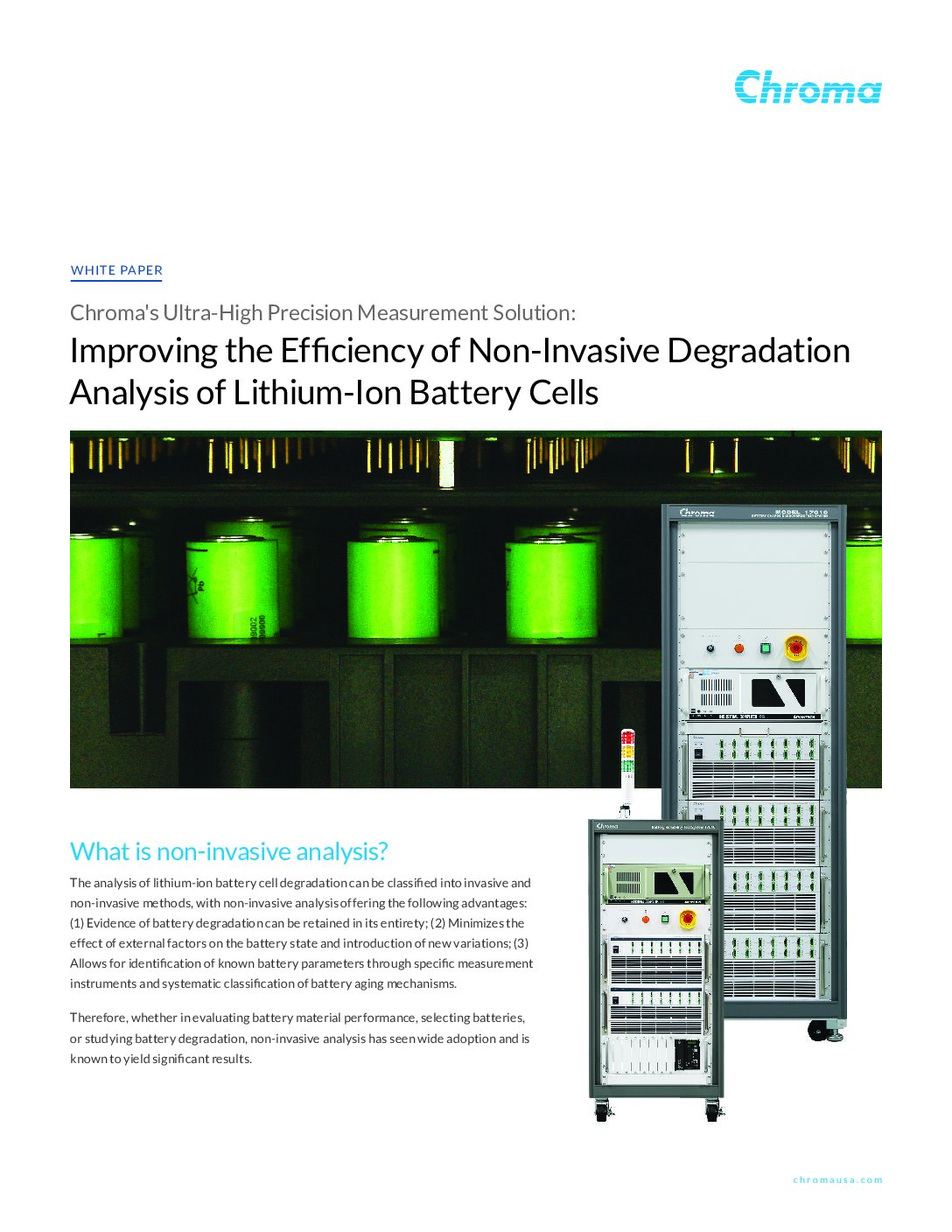

Sponsored by Chroma.
What is non-invasive analysis?
The analysis of lithium-ion battery cell degradation can be classified into invasive and non-invasive methods, with non-invasive analysis offering the following advantages:
- Evidence of battery degradation can be retained in its entirety;
- Minimizing the effect of external factors on the battery state and introduction of new variations;
- Allowing for the identification of known battery parameters through specific measurement instruments and a systematic classification of battery aging mechanisms.
Therefore, whether used to evaluate battery material performance, select batteries, or study battery degradation, non-invasive analysis has seen wide adoption and is known to yield significant results.














